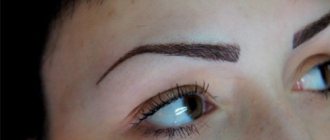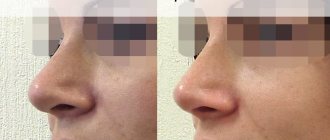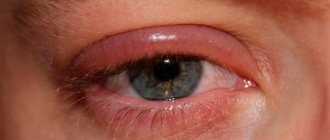Normal or pathological Associated symptoms When not to worry Sign of complication Warning at the Center How to remove at home Pathological process Solving the problem Frequently asked questions
Swelling after sinus lift and bone grafting can be due to both the body’s natural response to tissue damage and complications. In our Center, the possibility of developing complications is minimized. We have eliminated possible risks at every stage - from preparation to rehabilitation. The use of high-tech equipment allows bone augmentation operations to be performed safely, with minimal trauma.
Swelling after surgery - normal or pathological?
Sinus lifting and other types of bone grafting are considered low-traumatic procedures performed by an experienced doctor. But in any case, this is not only a therapeutic procedure, but also a kind of trauma. As with any other surgical procedure, tissue damage is inevitable. After surgery, swelling develops, which is a physiological reaction of the body's defense systems.
Osteoplastic surgeries vary in complexity and extent of damage to the soft and bone tissues of the oral cavity:
- With an open sinus lift, incisions are made in the gums on the front side of the upper jaw to create access to the maxillary sinus, requiring sutures at the final stage of surgery.
- Closed sinus lifting is also accompanied by a violation of tissue integrity, since access to the bottom of the maxillary sinus is made by creating a hole in the gum and bone at the site of implant installation.
- Implantation of an implant during simultaneous implantation and sinus lift operations also provokes swelling as a protective reaction to a new object for the body.
- Other methods of bone grafting are carried out in various ways, but in any case they cannot be done without soft tissue incisions. Some outdated methods involve transplanting an autograft from one point of the jaw to the required area; we do not use such methods.
The severity of edema depends on the extent of the operation performed and the individual characteristics of the body . For example, women are more prone to puffiness than men. Typically, swelling is not a complication; during the normal course of the rehabilitation period it gradually decreases.
Our work is aimed at minimizing complications
We took the necessary measures at every stage - from preliminary preparation and implementation of low-traumatic protocols to a complex of proprietary rehabilitation.
Levin Dmitry Valerievich
Founder and Chief Doctor of the Center
Associated symptoms
In addition to swelling in the first days after surgery, you may be concerned about:
- local pain in the area of the operation;
- redness of the gum tissue;
- temperature rise to subfebrile levels;
- slight secretion of lymph mixed with blood (ichor).
Depending on the volume of the operation, the amount of osteoplastic material introduced and implants installed, the severity of the above symptoms may vary.
The contract for treatment at our Center must indicate all acceptable postoperative conditions. Please read them carefully and the list of possible inconveniences.
Signature rehab to minimize swelling
For patients who want to get rid of facial swelling in 1-2 days, our Center has developed a set of restorative procedures
When should you not worry?
Edema is not a complication if:
- It gradually decreases and completely disappears after 3-7-10 days (depending on the complexity of the operation).
- It is localized at the site of surgery and implantation and does not spread to healthy, nearby tissues.
- It is not accompanied by severe pain and high body temperature.
- It is not accompanied by bleeding or purulent discharge from the area of the postoperative wound.
In general, there is no need to worry if the swelling does not interfere with your normal lifestyle (subject to the necessary restrictions during the rehabilitation period) and gradually decreases in size. In this case, it is enough to follow the doctor’s recommendations in the postoperative period and appear in a timely manner for a scheduled examination. Usually three days for women and two days for men is enough to reduce swelling.
Usually, the attending physician knows everything in advance when planning an operation.
Feel free to ask about the number of days with noticeable post-operative swelling. Based on these calculations, we issue certificates of incapacity for work or plan operations before the weekend. Warn us about possible trips and important events; it is better to plan the operation without compromising your work and personal life. You should understand that you will have to make lifestyle changes after the procedure. Social activity after the operation should be planned to be reduced. You will not be able to be active with swelling as before the operation; it is better to sit at home for a couple of days.
Levin Dmitry Valerievich
Founder and Chief Doctor of the Center
Additional general recommendations
During the rehabilitation period, you will have to make adjustments to your normal life, follow all doctor’s orders and carry out preventive measures:
- Avoid strenuous exercise, diving and snorkeling
- Avoid air travel to avoid pressure changes
- Sleep on a high pillow, not on the side of surgery
- Avoid chewing pressure on the surgical area
- Eat soft processed foods
- Drink enough water
To avoid discomfort, you should discuss with your doctor the most appropriate time for surgical treatment, when your social activity will be reduced. Most often, we schedule these operations at the end of the work week so that the patient has days off to recover. If necessary, we issue a certificate of incapacity for work.
When swelling is a sign of complications
Despite the fact that the appearance of edema and other symptoms is a physiological phenomenon due to tissue damage, they should not cause unbearable discomfort to the patient. If the symptoms are pronounced and significantly worsen the quality of life in the postoperative period, you need to talk about complications and immediately consult your doctor.
Alarming signs in which you should think about the development of a complication or an abnormal reaction that requires immediate correction:
- High rate of development, rapid increase in size of edema, transition of edema to the soft tissues of the face.
- The swelling is dense, the consistency of an eraser.
- Lack of positive dynamics - does not begin to decrease from the 3rd day after the operation.
- Impaired speech and chewing function due to edema.
Associated factors also indicate the occurrence of a problem.:
- An increase in body temperature above 38 degrees for longer than a day.
- Severe pain at intervals of less than three hours (even when taking painkillers).
- Discharge of a large amount of ichor, bleeding from the wound.
- The addition of a bacterial infection, manifested in suppuration in the wound area.
- Strange odors from the post-operative area.
If one or more of the above symptoms appear, you should immediately contact the dentist who performed the sinus lift or bone grafting. Find him and explain the situation, don’t delay. It is dangerous to self-medicate in such a situation , so entrust the treatment of the emerging complication to an experienced specialist.
If you are undergoing treatment at our Center, immediately contact the 24-hour support service by calling from your card.
Measures to prevent the consequences of sinus lifting in our Center
To avoid situations where swelling turns from a natural reaction into a problem for the patient, we have developed Uniform Quality Standards. We do not work in a rush, we provide personalized dental care, and devote the necessary time to seeing each patient. We provide a lifetime guarantee for bone grafting and implantation operations .
Preoperative preparation
If during the preparation stage obstacles to sinus lifting or bone grafting are identified, they are first eliminated, and only then the day of surgery is set.
Preoperative preparation includes:
- Computer diagnostics A CT scan is performed on a high-precision GALILEOS tomograph in ENT mode to assess the condition of the bone tissue adjacent to the area of the operation of the teeth. On the day of the initial consultation, immediately after the computed tomography, the attending physician, having familiarized himself with the anatomical features, will warn you about possible individual inconveniences and the likelihood of the body’s natural reaction to the intervention.
- Examination by an ENT doctor If diseases of the ENT organs are suspected based on the results of a computed tomography scan, before a sinus lift, an examination is carried out by a regular ENT doctor. If a cyst is detected in the maxillary sinus or inflammatory processes, conservative or surgical treatment is prescribed.
- Sanitation of the oral cavity If any dental pathologies are detected (inflammatory gum diseases, caries, inflammatory formations on the roots of teeth), which are foci of infection, their treatment is mandatory. This reduces the risk of developing postoperative complications of infectious origin. Also, complete sanitation of the oral cavity may include professional teeth cleaning to get rid of plaque and tartar.
Experienced doctors
Bone grafting and sinus lift operations in our Center are performed only by maxillofacial surgeons . These are experienced doctors with continuous work experience of 5 years, deep knowledge of the structure of the maxillofacial system and honed manual skills.
Low-impact technologies
The use of gentle technologies without a hammer or chisel prevents injury to soft and hard tissues and, accordingly, minimizes the occurrence of complications.
- Ultrasonic piezosurgery To work with hard tissues when creating access to the maxillary sinus, we use the NSK VarioSurg ultrasound device. It has a mild softening effect on the bone, without injuring it.
- Using the Lift-Control instrument system A coordinated set of micro-instruments allows you to lift the thin lining of the maxillary sinus as carefully and delicately as possible without damaging it.
- Biocompatible materials and growth stimulants We use only hypoallergenic drugs to increase bone volume in combination with bone morphogenetic protein (BMP). The drugs are certified in Russia and purchased from official representatives.
Maintaining sterility
- Sterilization of instruments is carried out according to the AntiAIDS-AntiHepatitis program. There are 2 separate sterilization rooms, 5 sterilization autoclaving stations .
- All osteoplasty and implantation procedures are performed only in sterile operating rooms. The Center has 3 operating units, which are loaded in a “checkerboard” pattern to allow for sterilization .
Branded rehabilitation
We made sure that each patient was provided with the necessary medications. You will receive a branded package with antibiotics, pain relievers, and wound care products . You won’t have to run to pharmacies after surgery. The package also contains a sheet with postoperative recommendations.
For those who want to go through the rehabilitation period faster, a set of restorative procedures :
- Bioreparation Injections of biostimulants based on hyaluronic acid with amino acids, trace elements and peptides to improve the condition of the skin and reduce swelling.
- PRP plasma lifting Injection of blood plasma into soft tissues to accelerate regeneration processes, improve healing, eliminate swelling and bruises.
- Microcurrent therapy is a physiotherapeutic method of gently applying a weak impulse current to the skin to improve metabolism, improve lymphatic drainage, eliminate swelling, relieve spasms and pain.
24/7 patient support
The post-operative support service operates 24/7. Our specialists will monitor your well-being, remind you to take medications and follow recommendations. This is an additional level of security.
You can ask any questions to the 24-hour medical post support service by calling the numbers listed on the card in the package with medications and recommendations.
Risk prevention measures at the Doctor Levin center
All surgical operations are carried out in strict accordance with the Unified Quality Standards to avoid complications
An important point in eliminating complications after sinus lift is the choice of osteomaterial. It should not cause allergic or other unexpected reactions of the body. We do not use bone grafts, which carry increased risks. We use biocompatible hypoallergenic materials in combination with the morphogenetic protein BMP and PRF membranes - stimulators of bone and soft tissue regeneration.
How to remove at home
The instructions for the postoperative period indicate in as much detail as possible what will help reduce the size of the swelling. Please read it carefully.
Cooling compress
The bag of post-op medications contains ice in a blue bag, freeze it in the freezer and reuse. Immediately after bone grafting, it is recommended to apply an ice pack (previously wrapped in a cloth or towel) to the cheek on the side of the operation. The duration of such a compress should not exceed 10-15 minutes, after which you need to take a half-hour break. The effect of using this simple method appears almost instantly - pain subsides, swelling stops increasing.
It should be taken into account that there are contraindications to this method of eliminating swelling, for example, trigeminal neuritis. Cold compresses are recommended for the first 24-48 hours, since it is during this time period that their effectiveness and safety are highest. If you hold the ice for longer than 15 minutes, there is a risk of hypothermia, be careful with this!
Taking medications
In addition to the local effects of low temperature, do not forget about taking medications. After osteoplasty, patients are prescribed anti-inflammatory and painkillers that help reduce or eliminate swelling and cope with other unpleasant symptoms of inflammation. In addition to anti-inflammatory drugs, multivitamins and broad-spectrum antibiotics are prescribed to prevent bacterial complications. You should take medications strictly as prescribed by your doctor or as instructed, without exceeding the permissible dose.
Diet
Also during the rehabilitation period, the prevention of edema is following a proper diet, drinking regimen, complete exclusion of chewing load on the side of the operation, regular brushing of teeth and baths with an antiseptic after each meal.
Read more about the rules of the rehabilitation period here - After a sinus lift
All these measures are aimed at relieving the symptoms of inflammation and thereby reducing swelling after sinus lifting and bone grafting. Eating spicy, too hot, hard food irritates the mucous membrane of the gums and increases swelling, and failure to maintain oral hygiene and neglect to use an antiseptic increases the risk of infectious complications.
Our doctor will inform you in detail about all the nuances of the postoperative period so that tissue restoration after surgery occurs quickly and does not cause discomfort.
Other causes of cheek swelling
Along with natural, so-called non-infectious inflammation, there are other causes of cheek swelling:
- tooth extraction due to gumboil;
- extraction with complications - in case of incorrect inclination or direction of tooth growth, when removing massive teeth and teeth with long roots;
- the presence of infection and inflammation in soft tissues;
- allergic reaction to medications or anesthesia;
- individual intolerance to components in medications or anesthetics;
- errors during extraction, insufficient antiseptic treatment of the oral cavity and residual infection;
- the presence of chronic diseases – hypertension, neuralgia, psycho-emotional pathologies;
- failure by the patient to comply with the recommendations of the dental surgeon, refusal of prescribed antibiotics or reduction of their dosage.
Most often, the tumor is caused by improper oral care, lack of disinfection with antiseptics, and skipping medications.
What pathological process can be suspected with persistent swelling?
When performing a sinus lift by an inexperienced doctor, perforation of the maxillary sinus is possible, which is accompanied by characteristic symptoms, including swelling. Consequences of this outcome of the operation:
- inflammation of the maxillary sinus;
- penetration of bone material into the sinus;
- complicated course up to meningitis.
Since some options for bone grafting end with the implantation of an implant, there is a risk of complications associated with its rejection or the development of inflammation around it (peri-implantitis). Both of these pathological processes are associated with a violation of surgical technique and the presence of a focus of infection in the oral cavity. The problem is serious, although extremely rare.
- In the case of peri-implantitis, the inflammation is localized near the dental implant and is accompanied by all the characteristic symptoms - pain, hyperemia, severe swelling.
- Rejection of the implant occurs due to the influence of immune factors on it and depends on the individual characteristics of the patient’s immune system. In some cases, this process develops rapidly, while in other cases, rejection can be suspected by pronounced swelling that does not decrease with time, pain, and deterioration of the patient’s general condition.
If the swelling begins to bother you greatly and other alarming symptoms appear, you should seek qualified help from a doctor. Treatment of pathological processes must be timely and comprehensive .
Why does numbness occur after dental implantation?
The first hours after dental implantation, anesthesia continues to be active, especially if it was about installing several implants at once. As a rule, a conduction method is used, which ensures blocking of nerve endings for up to 5-6 hours. But the implantation procedure itself takes no more than 2-3 hours, so after it, numbness can actually persist: in some patients - for a couple of hours, in others - up to 5-6 hours. In both cases, this is the norm, and the duration of anesthesia depends on the condition of the body.
Slight numbness of facial tissues can persist for 2-3 days - it is inextricably linked with swelling. But if sensitivity is not restored, you should consult a doctor. The causes of this condition may be damage to the facial or jaw nerve: the sooner treatment is started, the higher the chance of completely restoring tissue sensitivity.
Read more about what facial neuralgia is as a complication after dental implantation >>>
Swelling and numbness are the body’s natural reaction to the “invasion” of a foreign body, that is, an implant. Take a mini-vacation from work for 3-4 days, try to lead a more measured pace of life, give up business trips and important business meetings - give your body rest, because it needs strength to recover. If you want to reduce the risks of any consequences and complications to zero, try to carefully approach the issue of dental implantation, trust your doctor and follow all his recommendations.
Ways to solve the problem
A detailed x-ray examination is carried out on a computed tomograph in macro mode, the doctor determines whether there is inflammation or whether it is just panic from noticeable swelling. After assessing the clinical situation, the doctor will prescribe treatment aimed at eliminating the cause of the swelling.
- In severe cases, repeated surgical intervention may be resorted to (in case of implant rejection, purulent complications).
- In cases where the swelling does not bother the patient too much and gradually decreases during the first 7-10 days, additional medical intervention is not required and this symptom will disappear on its own as the tissue heals.
Patients often come to our Center with complications after unsuccessful operations. We specialize in helping with problems related to maxillary sinus dysfunction. The specialized ENT department is equipped with the necessary equipment to eliminate sinus lift complications.
Cheek swelling during wisdom tooth removal
Extraction of extreme molars (wisdom teeth) is considered one of the most difficult tooth extraction operations. It is accompanied by an incision of soft tissues and suturing, so inflammation after it is inevitable. Swelling after wisdom teeth removal lasts longer and is accompanied by pain.
Moreover, an elevated temperature may persist for several days, the patient may have difficulty swallowing, and experience pain when opening the mouth and during speech.
In this case, there is a risk of infection and serious inflammation, therefore, after depulping the extreme molars, it is necessary to take antibiotics and rinse the mouth with antiseptic solutions.








